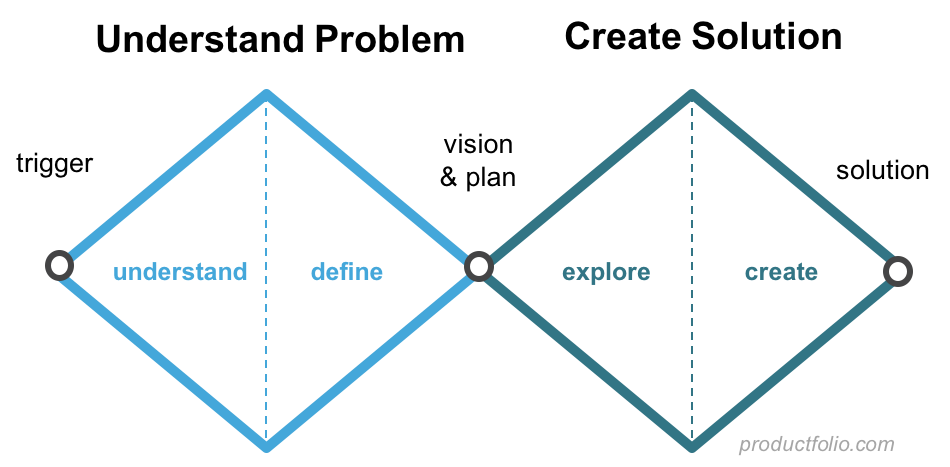What is the Double Diamond?
If you haven’t heard of the Double Diamond approach to planning and creation than it may help to start with its origins. Double Diamond is a process model that was created in 2005 by the British Design Council. They discovered that while everyone has their approach to creating something new, there are four distinct commonalities. With this discovery and the Double Diamond was born.
The Double Diamond approach has been adopted by large companies across the world as the standard model for the design and planning process. Companies like Lego, Microsoft, Starbucks, Xerox and, Yahoo have all implemented Double Diamond planning into their workflow.

Double Diamond Planning has four key stages; Discover, Define, Develop and Deliver. The planning process is iterative with ideas being developed and tested several times. Additionally, the Double Diamond is not Linear, you can go back and forth through the stages as needed. In addition to the four stages of Discover, Define, Develop and Deliver there are also two types of thinking; Convergent and Divergent:
Divergent – Divergent thinking is often described as the “heads up” approach. Your mind is open, anything goes and you’re looking at everything with fresh eyes and from a new perspective.
Convergent – Convergent thinking is often referred to as the “heads down” approach. Your actively working on the problem, testing, and looking at the data to find a solution.
Four stages of Double Diamond Planning
1. Discover – As it sounds, this is the Discovery phase. In this stage, you want to look at everything in a fresh new way, and try and see things from a new perspective. You want to talk with users and find out what problems currently exist in the marketplace that you can solve. Being out in the world and listening to as many people as possible allows you to build empathy and understanding of what may be needed in the marketplace. This is Divergent thinking. Your head is up, and your mind is open to all possibilities.
2. Define – This is the second quarter of the phase, where you define what the key problems are that have the potential to be solved. In this phase, you want to consider the customers’ journey, their pain points as well as their pleasurable experiences. With this in mind, you can also begin building out your strategy for the next phase. This is Convergent thinking. Your head is down in the computer and you’re actively looking at problems and strategy.
3. Develop – We’re now halfway through the Diamond, and the development work begins. By now you and your team have clearly defined the problems, and it’s now time to develop solutions. Brainstorming and ideation are key in this phase. You want your mind to be as open as possible to new ways of solving problems. It’s good to come up with 3-4 solutions to the users’ problems and do some rapid-fire testing. The goal in this phase is to get feedback as quickly as possible. Continue this process until you’ve narrowed it down to a solid 3 – 4 solutions to a users problem. This is Divergent thinking. Your head is up and you’re open to ideas for solutions. Again, all things are possible and anything goes.
4. Deliver – This is the last of the four stages – you’re now in the home stretch. In the development phase, you’ll do trial runs, workshops, exercises, and several iterations. You should now have 3 – 4 viable solutions to your users’ problems. It’s time to evaluate your feedback from your rapid-fire testing. You can iterate again in this phase just before finalizing, producing and launching the final product. This is Convergent thinking. Your head is down in the computer actively working towards delivering the final product.
The Double Diamond is a great guide to use while working with a team so that everyone has a visual guide for what stage the team is at in the process and a clear view of what stages are coming next. The Double Diamond creates a clear roadmap and incorporates user feedback throughout the process. Often, teams will go through multiple iterations of the Double Diamond planning model before the launch of a final product to ensure the success of a product.